4 Horse Barn Design Ideas and a Fantastic Material for Flooring

Owning horses is an incredibly rewarding experience. Whether you’re breeding them, using them for farm work, or you just enjoy raising them, being around these majestic animals on a daily basis is simply good for the soul.
Depending on how many horses you have, the weather in your location, and the layout of your property, you might have different needs when it comes to your horse barn. All horses need a barn to house them, protect them from the elements, and keep them in one place for grooming and medical care.
4 Types of Horse Barns
There are multiple different types of horse barns you can use, all with their own pros and cons. In case you have one or more horses on your property and are looking to build a barn for them, let’s go over a few of the best horse barn design ideas:
1. Run-In Shed
This is one of the simplest and cheapest types of horse barn ideas. It’s primarily used to protect horses from the elements during outdoor work and only features 3 walls. The open side of the barn allows the horses to walk in and out as they please and caters to their nature as prey animals, giving them the sense that they can watch out for predators.
Run-in sheds are perfect if you only have a few horses as they don’t take up much space. They don’t come equipped with a tack room or a second story for hay storage, so they don’t have quite as many requirements when it comes to the overall design.
2. Shed Row

Shed row barns are very similar to run-in sheds except that they have an additional 4th wall where the run-in shed does not. This wall features stall doors that can be closed or left open depending on your preference. Best suitable for warm weather climates, the shed row barn provides excellent protection against the elements, great ventilation, natural light, and a view of the outdoors that horses love.
3. Racetrack

Racetrack barns are built by putting two shed row barns right across from each other with a center aisle in the middle. They open out to opposite sides from each other, preventing the horses from a view of each other.
This is great for horses who are territorial and may experience distress at the introduction of new horses into the barn. These types of barns are not considered to be ideal for cold-weather climates because the ventilation is so good that it can be hard to maintain an indoor temperature suitable for the animals.
4. Center Aisle

Center aisle barns are built with a row of stalls on each side and a center aisle in the middle. Unlike other interior horse barn ideas, these barns open out into the middle of the barn, giving your horses a view of each other. For mild-mannered horses, this is ideal because it allows them to see their fellow companions and derive comfort from that.
Center aisle barns are the most common type of horse barn and can be scaled up into very impressive, two-story barns with tons of space for hay storage, tack rooms, breeding stalls, and other horse barn luxuries. They are considered to be an all-weather style of horse barn.
Horse Barn Considerations
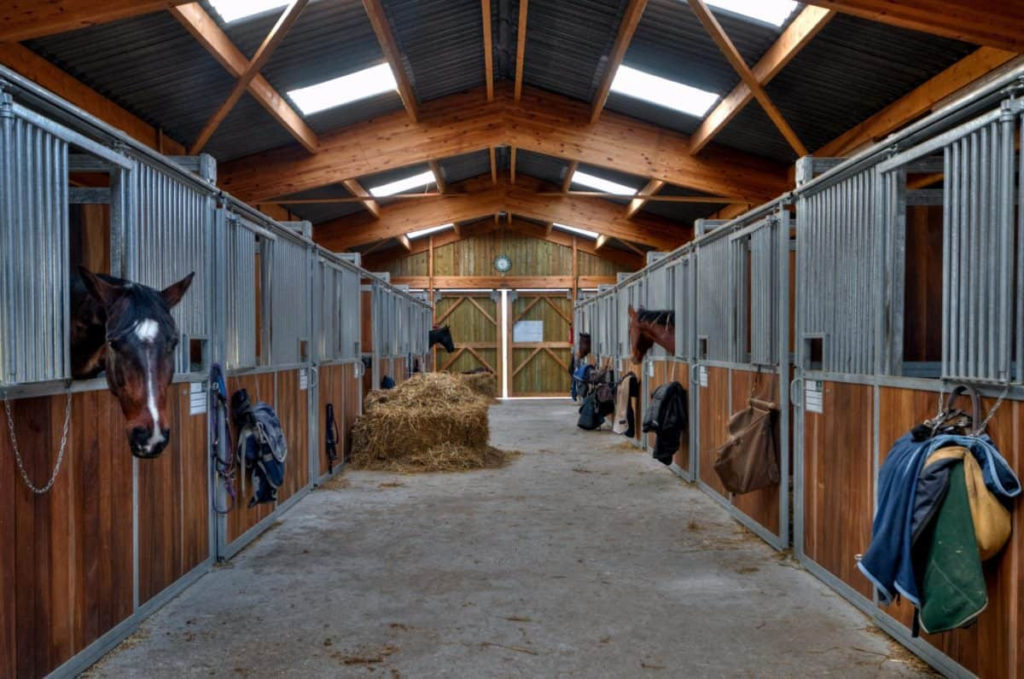
Tack Rooms
Tack rooms are a place to store all your grooming equipment. They should feature moisture and temperature control to prevent mold growth on items like leather saddles. A door can help debris from getting on the valuable equipment inside, and a mini fridge is perfect for storing medications.
Wash Stalls
Wash stalls will allow you to clean your horses no matter what the weather is like outside. They need non-slip flooring, proper drainage, a hot water tank, frost-free fixtures, and a cabinet for storage. Overhead hose systems are a plus, for easier cleaning.
Flooring
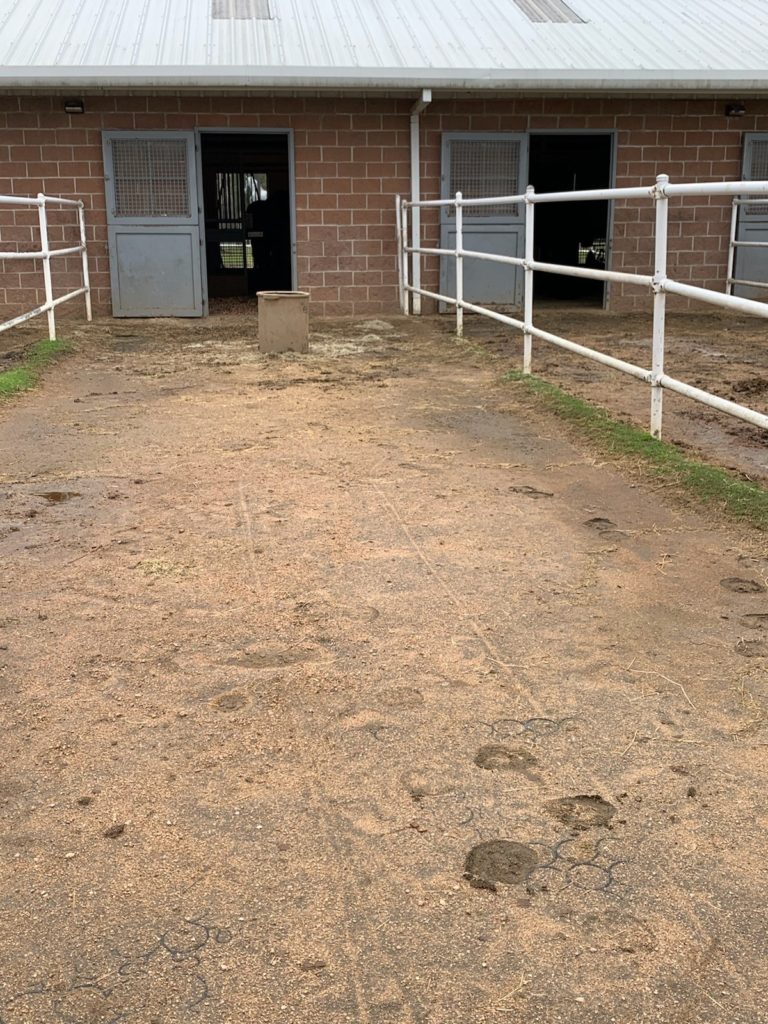
Flooring is one of the most important aspects of any horse barn. Many horse barn ideas use concrete flooring, but permeable flooring is a much better option for both the interior and exterior of horse barns.
Permeable pavers like the kind made by TRUEGRID, for example, are the best choice for maximizing permeability, durability, ease of maintenance, and resistance to insects and mold. They also make a great paving option for any landscaping around your horse barns for these reasons.
TRUEGRID PRO LITE and TRUEGRID PRO PLUS pavers are both perfect for locking gravel into place over a 4” – 8” subsurface of gravel to create a durable, level surface that is 100%-permeable and better for the health of your horses’ feet. Permeable pavement flooring is easy to clean, and needs only to be sprayed down and swept.
It’s also non-slip and great at deflecting the odors commonly found within horse barns. You won’t find any horse barn design ideas for flooring that stay dryer and cleaner with less effort on your part than permeable pavers like the kind made by TRUEGRID.
Build Your Horse Barn with the Best Flooring for Horses with TrueGrid
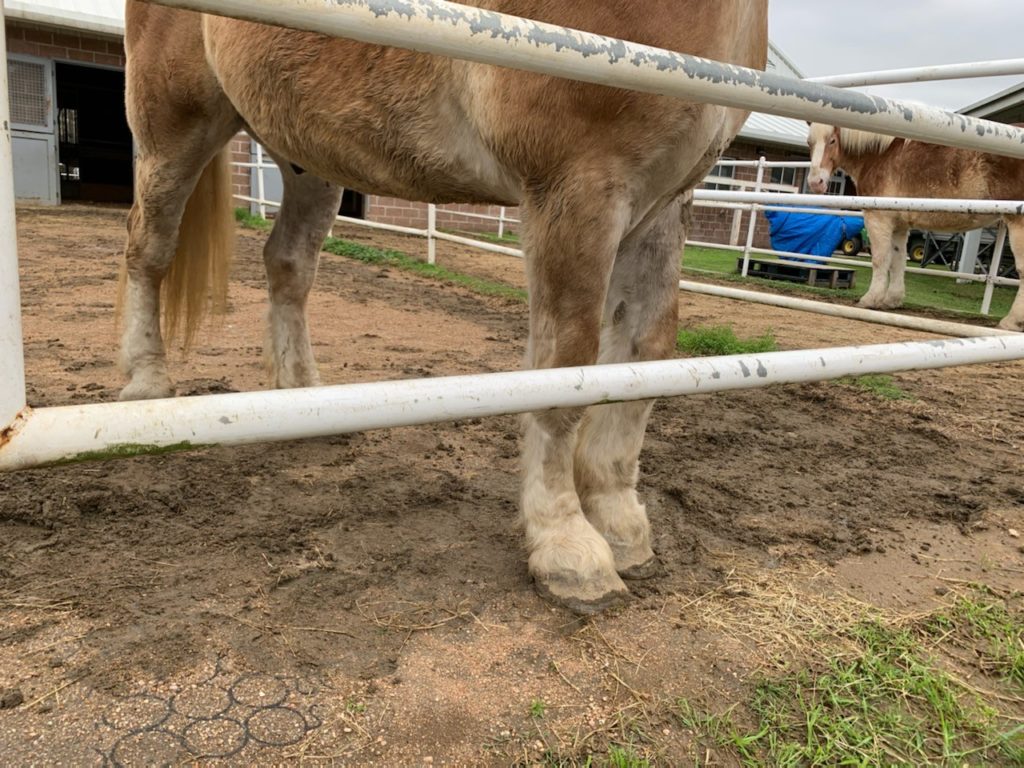
When it comes to flooring that meets all the needs of a horse barn and then some, TRUEGRID permeable pavers are the best in class. If you want horse barn floors that are eco-friendly, 100%-permeable, durable enough to last 60 years with only minimal maintenance, and incredibly easy to install, call TRUEGRID today and get in touch with a pavement professional for a free quote.

Parking lots are more than just a place for people to park. They provide an opportunity to change up the aesthetic of your business, add natural drainage and shade, and improve your overall level of eco-friendliness if you choose the right materials to build with.
The architecture you include in your parking lot design, for instance, can be the perfect way to incorporate all these things into your parking lot without having to change up the whole parking lot or spend too much on fancy materials.
Parking lot islands are the best way to do this, so in case you want to know how to blend landscape architecture into your parking lot design, let’s take a look at some of the best ways to do so.
Landscaping and Parking Lots
Greenery
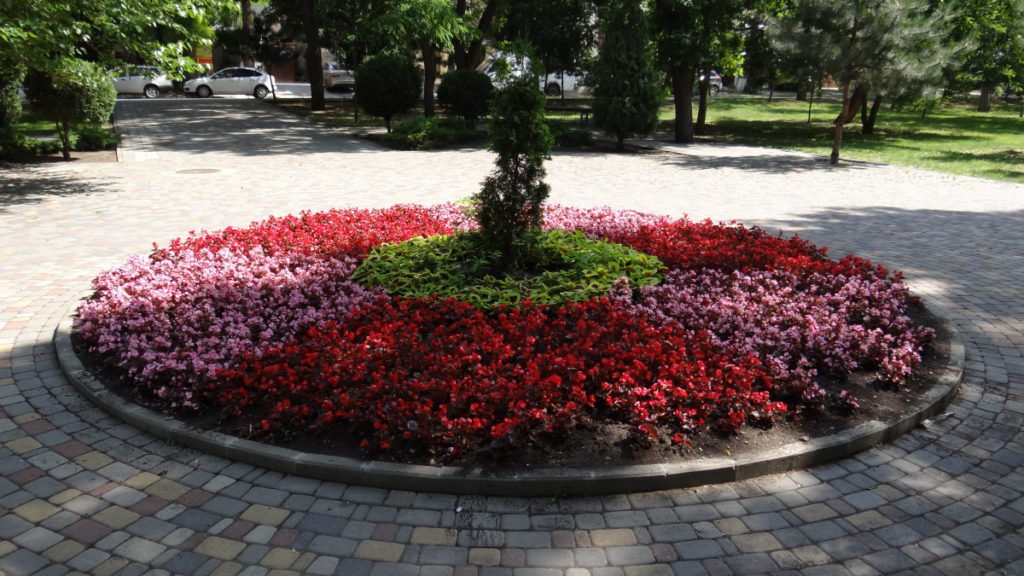
When it comes to landscape architecture and parking lot design, parking lot islands are the best way to break up the monotony of pavement and implement a variety of beneficial additions. Greenery, for example, can go a long way and provide many benefits you might not have been aware of.
Improving curb appeal is one of the main benefits of adding greenery to your parking lot islands. When people are driving down the roads and looking for a place to shop or stop in, they subconsciously make decisions based on what they see.
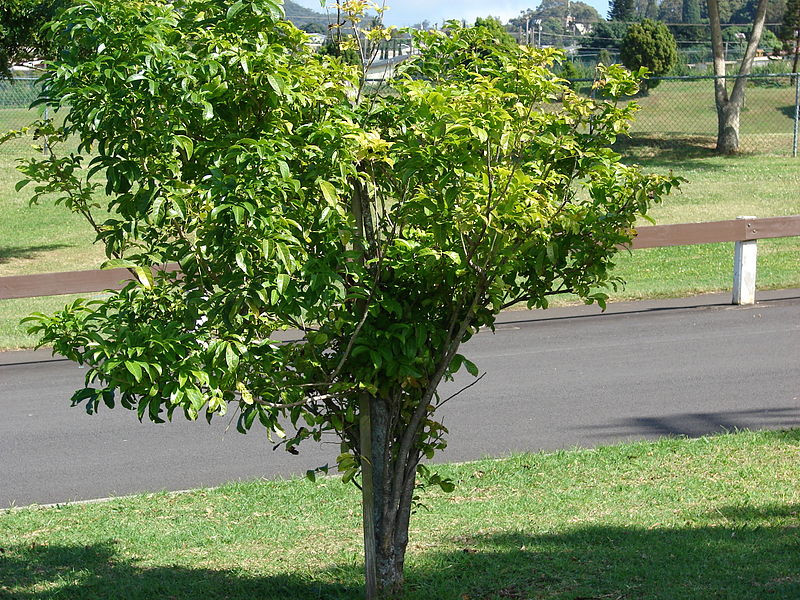
If they see nothing but a big paved parking lot and parking spaces, they’re more likely to pass up your place of business in favor of something that looks more appealing. Adding trees, shrubs, and/or plants is a great way to catch the eye and make your business look more appealing.
Not all trees and plants are suited for parking lots, however Some plants are sensitive to car exhaust and will shrivel up and die before long. Some types of trees will shed buds and flowers, and create a mess for you to clean up.

The best type of trees to use are ones with deep roots that can reach below the compacted soil of the subsurface of your parking lot and get as much water as they need from deep underground. You also want durable plants like Daylilies, Purple coneflower, and Virginia Sweetspire.

These plants have tons of color that will add a nice pop to your lot, while still being durable enough to withstand the rigors of parking lot life. Native plants, in general, will be much more suited as opposed to non-native plants. Some of the best trees to use include types such as Crape Myrtle, Chinese Elm, and Yaupon Holly.
Stormwater Drainage

Another way to improve your parking lot design while also reducing maintenance costs and improving durability is to use permeable pavers for stormwater drainage. If your parking lot islands are set at a slightly lower level than the rest of your lot, building them with permeable pavers like the kind made TRUEGRID, for example, will allow for maximum drainage.
Both TRUEGRID PRO LITE and TRUEGRID PRO PLUS are 100%-permeable and can handle the heaviest of rains without flooding. They’re so effective at stormwater drainage that they can even eliminate the need for additional drainage methods like underground pipes and drainage grates.

TRUEGRID permeable pavers are one of the quickest paving methods to install, with parking lot islands projects able to be completed in less than a day. They use permeable pavers to trap a layer of surface gravel over the top of a 8-inch subsurface also composed of gravel.
The surface gravel is completely locked into the surface of the pavers, so you’ll never have to worry about gravel spread or refilling your landscaped islands, as you would with loose gravel. This is especially handy if you expect any amount of foot traffic through your parking lot islands, as you can build pathways that preserve the health and livelihood of your plants while giving people a path to walk on.
TRUEGRID pavers are also one of, if not the most eco-friendly paving options because they are made from 100% post-consumer recycled plastic and will last for up to 60 years before needing to be replaced. This drives down maintenance costs to almost nothing and prevents the need for heavy, dirty-burning equipment to produce and/or install more asphalt or concrete.
Permeable Pavers from TRUEGRID Are an Excellent Way to Blend Landscape Architecture Into Your Parking Lot Design
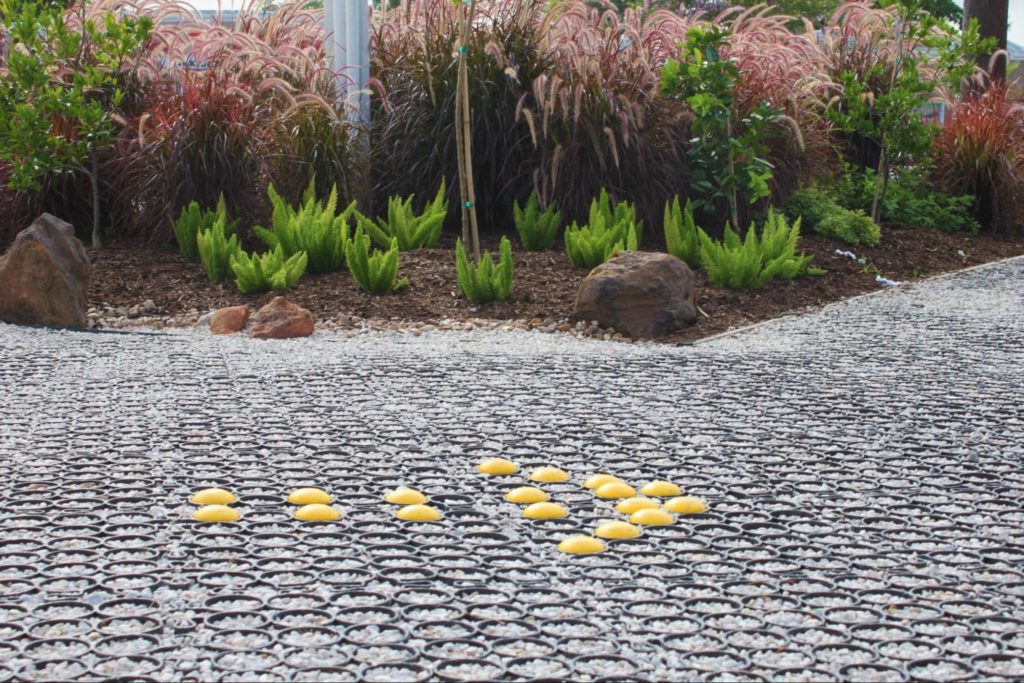
If you are designing a parking lot and you want to build a version that isn’t as monotonous and bland as everyone else around you, you need to spice up your parking lot islands. Improving your lot with trees, shrubs, plants, and permeable pavement is the best way to get the most out of your islands.

Not all types of permeable pavement are created equal, however, so if you want the most durable, eco-friendly, and permeable pavers money can buy, call TRUEGRID today to get in touch with a pavement professional.

An RV park can be a profitable venture if you play your cards right. The main determining factor in how successful your RV park is, is how it’s designed. RV park design encompasses a lot of things, from location to parking pad dimensions, weather, adherence to regulatory codes, cost, upkeep, amenities, and more.
5 Features to Assess when Designing a Modern RV Park
The choices you make within these categories can be the difference between your RV park being an attractive destination for RV owners or not. If you’re in charge of designing an RV park, let’s take a look at how you can optimize it to be as successful as possible:
1. Follow Regulatory Codes
The regulatory codes governing things like sewer and water services, garbage collection, stormwater drainage, traffic circulation, electricity, and development densities are all going to depend on where your RV park is located. You need to make sure that you are well within regulation as it pertains to each of these categories when designing an RV park
Failing to do so is actually somewhat common among smaller RV parks and can lead to fines or even the closure of your park. So, making sure your RV park is fit to stay open by following your local regulatory codes should be first and foremost on your mind during design.
2. Layout

The RV park design layout will have a direct impact on how attractive it is to RV owners. Parking pad design plays a big role in a successful park. Each RV parking pad should be at least 20 ft. by 50 ft. and be accompanied by an adjacent camping pad of at least 20 ft. by 20 ft. These dimensions are generally big enough to hold an RV, a second vehicle, a picnic table, a grill, and a fire ring or pit.
The RV parking pad needs to be as level as possible with no more than a 4-inch variation in height across the pad. Many RV’s use RV jacks to level the RV after it has been parked anyway, but a pad with too much tilt to it can cause the RV jack to lift one or more tires off the ground, which is not suitable for proper stability. Not having a level pad can cause structural issues to the frame of an RV and you do not want your park to have a reputation for ruining the frames of the RVs that park there.
There are a few different types of parking spaces you can use in an RV park layout design. Back-ins are designed for the RV to back in and have the front facing towards the road. They save the most space and are the most common type of parking spot. These spots need the electrical and water hookups on the driver’s side of the parking space because that’s where the hookups are located on most RVs.

Pull-thru spaces are open-ended and can be backed into or pulled into. They are the easiest to navigate but take up the most space. Pull-ins are designed to be pulled right into, with the front of the RV generally facing towards some sort of scenic view.
RV parking spaces and the entire park, in general, should be free from low-hanging limbs, rocks, roots, and other debris that can obstruct the unimpeded flow of traffic through the park.
The roads throughout your RV park should be at least 20 ft. wide with a 6 ft. lane for pedestrians next to them. This type of lane can function as a one-way road or a two-way road in case of emergencies.
3. Amenities

Some of the best RV park design ideas for amenities are things like Wi-fi, restrooms, showers, and other things to set your park apart from other parks and incentivize RV owners to choose your park. Swimming pools, tennis courts, basketball courts, bingo halls, nature trails, and wildlife preserves are some of the most common and desirable amenities you can add to your RV park.
4. Location

The location of your park will also play a big factor in your success. People like to stay at RV parks for extended periods of time so the local nightlife and attractions will have an impact on your park’s appeal. Weather is a significant factor as well, seeing as how most RV owners are looking for warm weather in the winter.
Views are big too. Having great views at your park can help it stand out and attract more campers even if you aren’t near a popular urban area or a beach. Mountainside views are known to be popular among RV owners.
5. Paving
Paving can be one aspect of your park that sets you apart and attracts RV owners if you do it right. Typical asphalt is usually fine for the roads, but you want permeable plastic pavers for your RV parking spaces.
TRUEGRID PRO LITE and TRUEGRID PRO PLUS pavers, for example, can be used to create completely permeable spaces that last for up to 60 years with minimal maintenance required. This will help you drive down maintenance costs while providing level, durable, natural looking, and permeable spaces for your residents.
TRUEGRID Pavers Are the Best Paving Option for Your RV Park
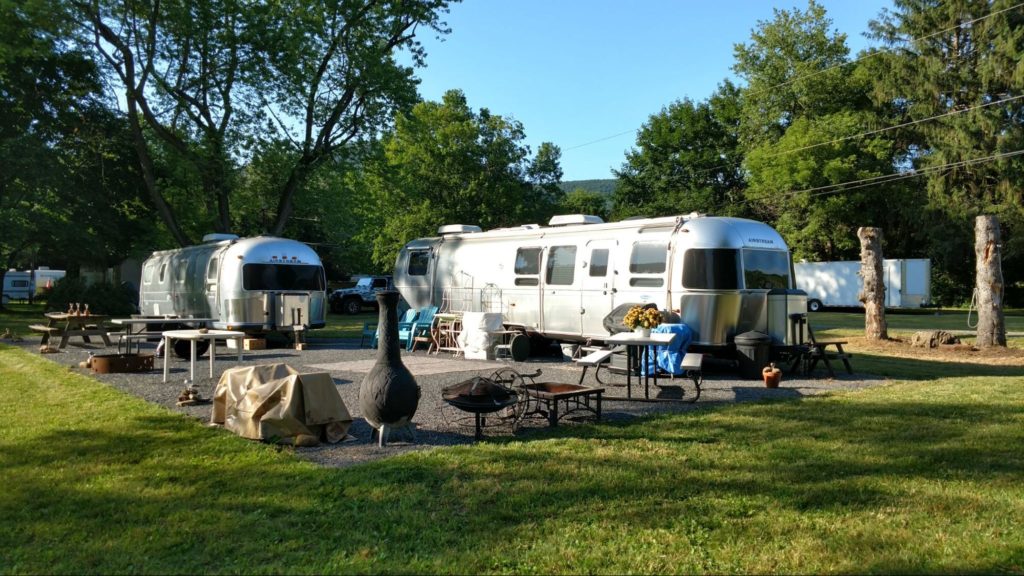
The best way to pave your RV parking spots so that they are as permeable, durable, cost-effective, long-lasting, and eco-friendly as possible is to use TRUEGRID permeable pavers to lock gravel in place and provide a level surface for parking and driving. If you want the best permeable paving option, contact TRUEGRID today for a free quote.

Potholes in gravel are a huge problem for many people. Because of the nature of loose gravel, potholes develop frequently in roads, driveways, walkways, and other areas paved with loose gravel.
When a pothole in gravel develops, it can lead to a wide variety of issues that can cause annoyance, injury, and damage to vehicles, if left untreated. Potholes in gravel will also get bigger and bigger over time if they aren’t dealt with. For these reasons, it’s imperative that you address any potholes you find in gravel pavement as soon as possible.
There are many ways to treat a pothole in gravel, but not all of them are as practical as one another. Concrete, for example, is a common material used to fill in potholes. On the surface, it might seem like a smart, semi-permanent solution to a pothole in gravel pavement, but there are many reasons why this is not the case.
If you want to learn about the best way to fill potholes in gravel, let’s take a look at a few different materials that are available, as well as what the best material is for permanent pothole filling.
Material Choices for Filling Potholes
1. Concrete
Concrete is a popular choice when it comes to filling potholes because, unlike gravel, concrete is much more permanent and less likely to break down. Gravel can spread, but concrete, obviously cannot. However, filling gravel potholes with concrete isn’t as foolproof as it sounds for a number of reasons.
For starters, concrete has vulnerabilities of its own. It needs to be resealed every 5 years or else water will penetrate its surface and cause cracks to develop and get bigger over time. Concrete is also brittle in cold temps, and subject to chipping and cracking. Concrete is also impermeable, meaning it will create runoff around the edges which will lead to an increased level of erosion.
In short, unless you replace the entire paved surface with concrete, you’re going to get a higher level of erosion and degradation all around the edges of the original pothole. Concrete also costs a lot to install if you aren’t doing the job yourself, and it takes a long time to install compared to other materials.
2. Loose Gravel
Loose gravel is the cheapest and easiest way to fill a pothole. Unlike filling gravel potholes with concrete, loose gravel is super quick and cheap. The downside, however, is that you have to keep adding more gravel to your paved area as it breaks down and spreads off to the sides. Gravel spreads and breaks down rather quickly, meaning you have to constantly buy more gravel and add it to your paved area.
3. Asphalt
Using asphalt to fill a pothole is similar to filling potholes with concrete. It’s longer-lasting than loose gravel, but needs to be resealed every 5 years to prevent water intrusion. Asphalt is also vulnerable in hot temps because it becomes sticky. It costs about the same as concrete to buy and install, and takes almost as long.
It’s impermeable as well, meaning it will cause runoff all around its edges which will require you to add more and more material to fill in these gaps in the gravel. There are permeable versions of both asphalt and concrete you can implement, but they are generally much more fragile than the regular, impermeable versions. Thus, it will drive up the long-term cost of maintenance significantly.
4. Permeable Pavers

Permeable pavers are by far the best choice for filling gravel potholes. Unlike filling gravel potholes with concrete, permeable pavers are much more durable, cost-effective, and permeable. TRUEGRID PRO LITE and TRUEGRID PRO PLUS pavers, for example, have 100% permeability. This allows them to drain even the heaviest levels of rain directly through them and into the soil below before it can cause any flooding or erosion.
They’re also much easier and quicker to install gravel or concrete, with installation able to be completed in less than a day in most cases. They will never shift, sink, crack, or warp. The inability to shift or sink comes from the fact that they are installed over a sub-base of gravel, to prevent movement.

TRUEGRID pavers are also made from 100%-recycled plastic, making them the most eco-friendly choice for repairing gravel potholes, by far. TRUEGRID pavers will last up to 60 years before needing to be replaced and require almost zero maintenance throughout their lifetime.
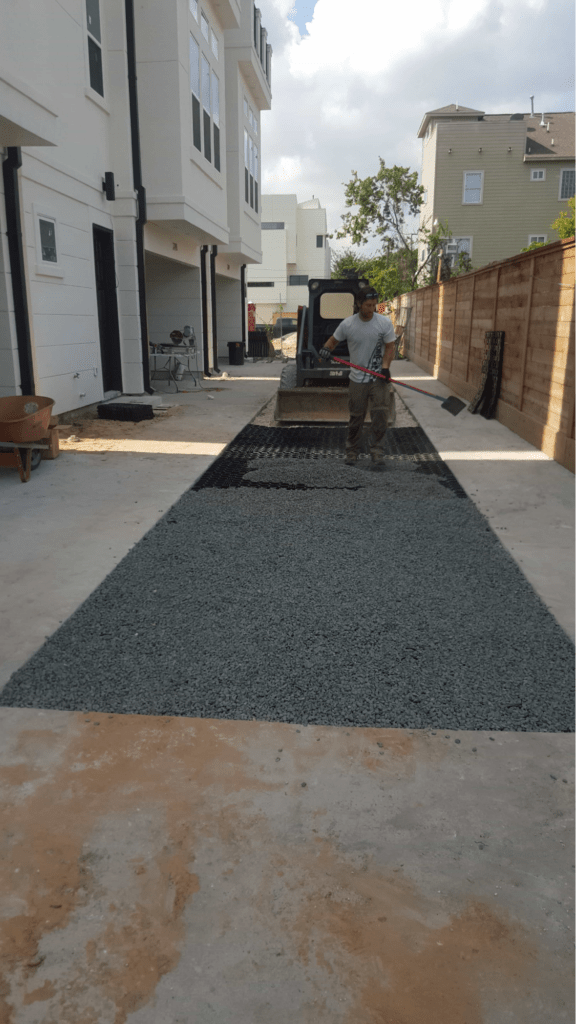
TRUEGRID pavers are durable enough to handle any type of vehicle traffic at any level of frequency. They can even withstand the weight of a monster truck driving off a ramp and landing on them without breaking, and that’s before they’re even filled with gravel. The surface of the pavers is filled with gravel that is compressed into their empty cells and locked into place, to prevent migration or degradation from occurring.
TRUEGRID Pavers Are the Smartest Choice for Filling Gravel Potholes

If you want the most cost-effective, durable, permeable, long-lasting, easy-to-maintain, and quickest alternative to filling gravel potholes with concrete, don’t hesitate to contact TRUEGRID today to get in touch with a pavement specialist who can get you pointed in the right direction.

